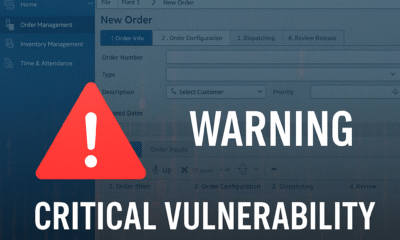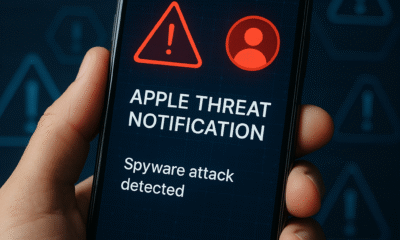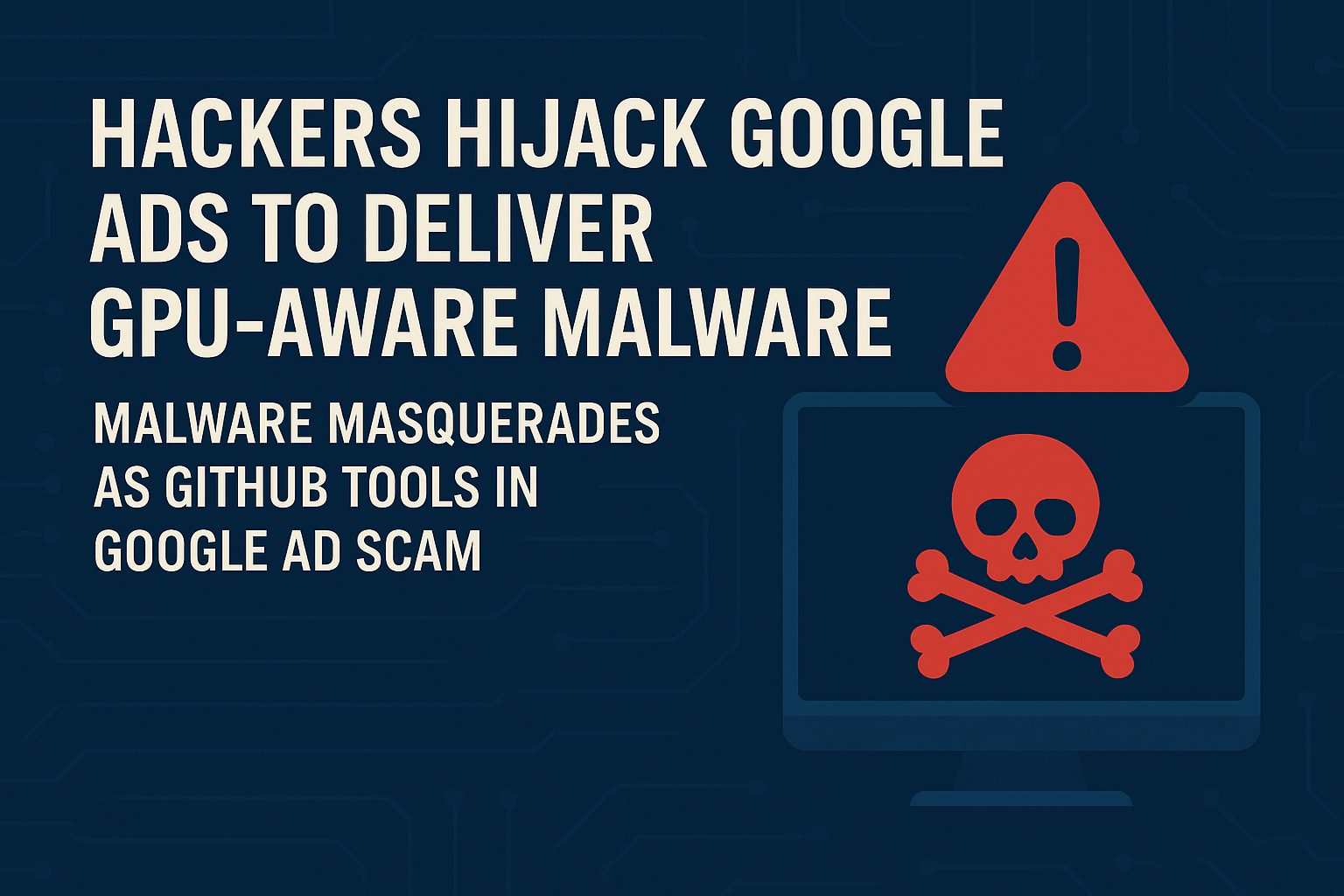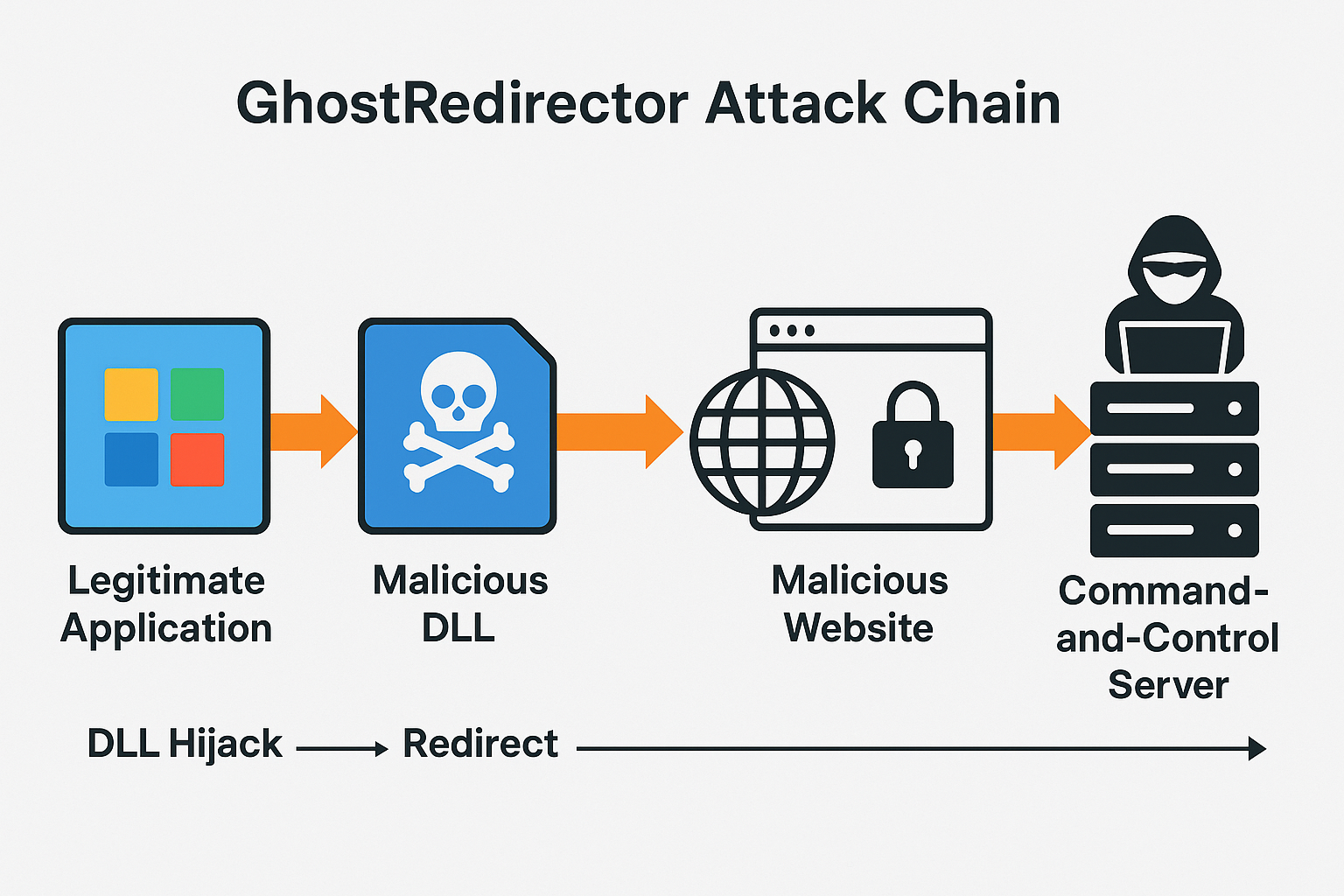Blog
Recent Cyber Security Threats and How to Avoid Them
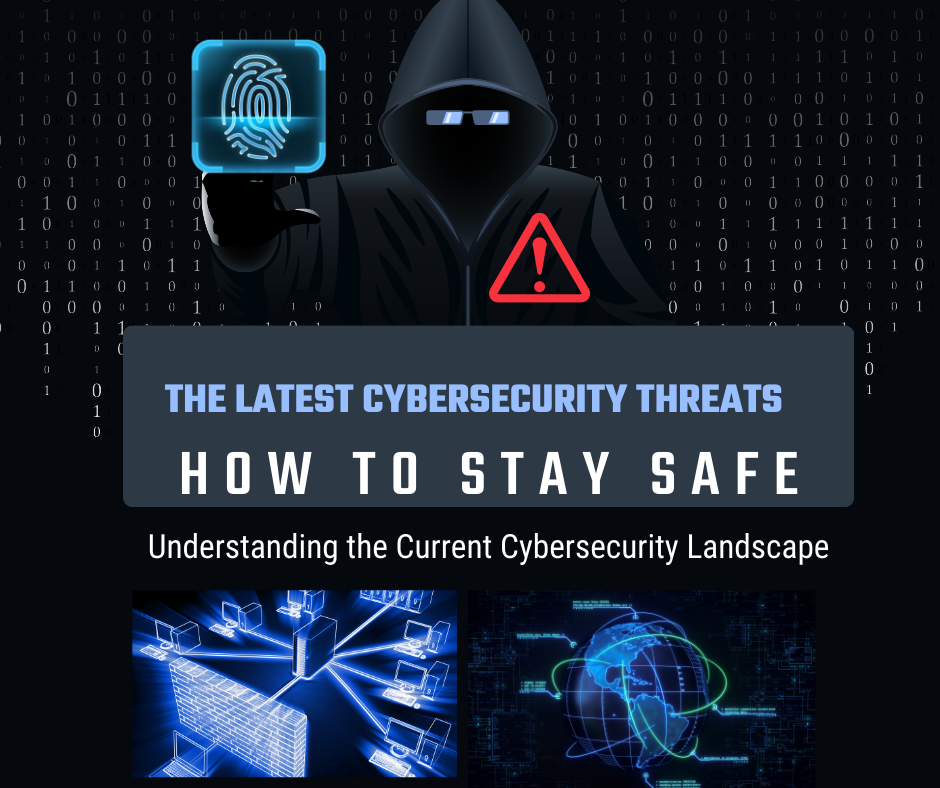
Recent Cyber Security Threats and How to Avoid Them
Cybersecurity has grown to be a concern for tech companies and government agencies in the era of connectivity that we live in today. We have been talking about it as though it is somehow not a key issue that impacts all of us, from the individual to multinationals. While technology changes, the threats remain in the dark, citing irrelevance to time-innovated security measures. In this post, we will discuss five of the most common threats to cybersecurity and tips on how you can protect your data from these dangerous minds.
Comprehending the Current Cybersecurity Landscape
The digital world is such a conflicting thing with itself. This means it provides convenience and connectivity like never seen before but is also filled with lots of vulnerabilities. Cybercriminals are becoming more skillful and using sophisticated methods to manage vulnerabilities.
The Rise of Ransomware
Ransomware attacks have increased recently, focusing not only on small businesses but larger infrastructure as well. These types of attacks involve ransomware that infects a target device with software that locks the users’ data and demands payment to release it.
The 2021 Colonial Pipeline attack was a powerful global reminder of how destructive ransomware can be — remember when it messed with the Eastern US’s fuel supplies?
Prevention Tips:
- * Back up your files on an external hard drive or cloud service.
- * Patch your systems, operating system, and software regularly to address security gaps.
The Growing Threat of Phishing Scams
One other highly developing class to observe is phishing scams — they accounted for the fourth-highest legion of assaults detected at greater than 93 million in June.
Gone are the days of spamming around phishing emails with bad English. Fast forward to today, and they are finely tuned, frequently appearing to be real communications from your regular providers. Spear phishing, where attackers craft individualized emails to fool people into revealing confidential information, is on the rise.
Prevention Tips:
- * Beware of cold emails/messages — especially ones that require any personal info.
- * Check the email address from the sender and see whether there is any discrepancy.
Cybersecurity Emerging Threats
Technology changes, and so do the threats that require updating security postures.
IoT — Internet of Things Vulnerabilities
Smart homes, filled with all sorts of connected devices — from smart thermostats to car sensors — have generated new cybercriminal hackers in the home. Unfortunately, these are mostly insecure devices, as they do not come with strong security capabilities, making them vulnerable to attacks.
For instance, 2016 saw an exceptionally large distributed denial-of-service (DDoS) attack that took advantage of insecure IoT devices during the Mirai botnet attack, which targeted some of the biggest websites.
Prevention Tips:
- * Don’t use default passwords on any of your IoT devices.
- * Keep device firmware updated to improve security.
Cybercrime and the Role of Artificial Intelligence (AI)
Although AI provides many advantages, it can also be a double-edged sword and give cybercriminals the automation and scalability they need for their attacks. They might use it for building phishing scams, finding vulnerabilities in a system, or other malicious activities.
Real-World Example:
Malware that is AI-driven can adapt to suit the security measures in place, making it harder to detect, isolate, and counter.
Prevention Tips:
- * Leverage AI-driven security solutions for real-time threat detection and response.
- * For the latest updates and news, follow us on our blog section or connect with us over LinkedIn at SecureLayer7.
- How to Boost Your Cybersecurity in Practical Steps
In this day and age, you have to be proactive as the internet creates anonymity requirements. Here’s what you can do to increase your data and privacy protection.
1- Strengthen Your Passwords
To fill out forms and other online processes automatically, enable password managers. Weak passwords are the common cracking point for cybercriminals. Use naturally strong and unique passwords for every account.
Here are some tips:
- Include uppercase, lowercase, and special characters (UpperCase, LowerCase, Special).
- If you have too many credentials to remember, use a password manager.
2- Use Two-Factor Authentication (2FA)
Two-factor authentication increases your security by requiring a second means of getting verified, like a text message or authenticator app.
- Use 2FA, especially for email and financial services.
3- Learn for Your Own and Your Team’s Sake
Cybercrime is fought with awareness. Keep yourself and your team up to date with the new threats and emerging best practices.
- * Cubedos are the training you schedule across the year, focusing on community-prioritized cyber education.
- * Subscribe to our cybersecurity newsletter to get the latest news and trends.
This really struck me, and I completely agree: Because cybersecurity is more than just technology. It’s not just about the people either. The first line of defense is educating yourself and your team.
Conclusion
There is a pool of new threats out there, thanks to the ever-evolving nature of our online world. This means staying up to date with current threats and ensuring you have all appropriate security measures in place to protect yourself and your data.
Let there be no doubt, cybersecurity is everyone’s responsibility, and forming an alliance today can help reduce tomorrow’s hefty price tag.
Learn more about cybersecurity best practices via:
- Cybersecurity & Infrastructure Security Agency (CISA)
- National Institute of Standards and Technology (NIST)
Blog
Morocco Sets Sights on 70% 5G Coverage by 2030 With New License Launch

RABAT — July 26, 2025
In a landmark step toward digital transformation, Morocco’s National Telecommunications Regulatory Agency (ANRT) has officially launched the bidding process for 5G licenses, inviting national and international telecom operators to help deliver 25% population coverage by 2026 and 70% by 2030.
5G Strategy to Power FIFA World Cup and Beyond
The initiative aligns with Morocco’s preparations to co-host the 2030 FIFA World Cup and its broader Maroc Digital 2030 agenda. “This is about more than faster networks—it’s about our national future,” said Driss El Yazami, policy advisor at the Ministry of Digital Transition.
Highlights of the 5G Deployment Plan
- Initial rollouts in Casablanca, Rabat, Marrakech, and Tangier
- Smart infrastructure integration in stadiums and airports
- Spectrum allocation in 3.5GHz and mmWave bands
- Coverage expansion to underserved rural regions
From Urban Startups to Rural Farmers: 5G’s National Reach
5G is expected to revolutionize Moroccan society. Students will gain access to virtual classrooms, remote clinics will offer telemedicine, and farmers can deploy smart sensors. “Connectivity is empowerment,” said Amina El Mahdi, a tech entrepreneur in Fez.
Economic Impact and Cybersecurity Measures
The Ministry of Finance predicts 5G will boost GDP by 1.5% by 2030. All operators must meet strict cybersecurity, data localization, and interoperability standards monitored by ANRT and the National Cybersecurity Directorate.
2030 World Cup: Smart Stadiums and Global Broadcasts
With over 1.5 million visitors expected, 5G will support crowd management, mobile ticketing, HD broadcasts, and fan engagement zones across Moroccan host cities.
5G infrastructure being deployed in Morocco’s major cities ahead of FIFA 2030.
Blog
Critical Cyber Breach in Tunisia: Government Systems and Banks Hacked, Confidential Data for Sale
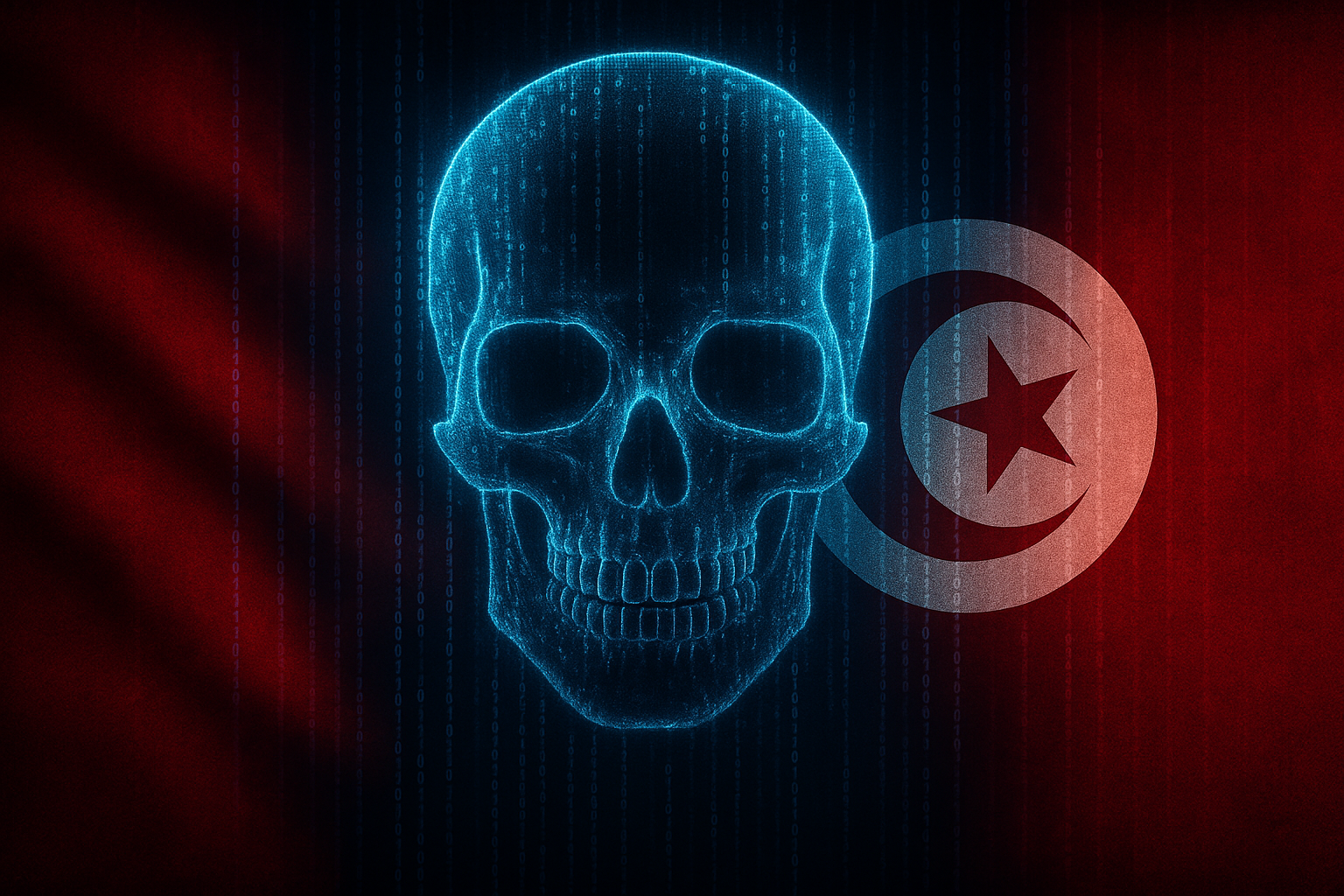
A coordinated cyberattack led by Moroccan hacker Jokeir 07x and groups Dark Hell 07x and Dr. Shell 08x compromises key Tunisian institutions, exposing government systems, banking infrastructure, and personal data to global exploitation.
Tunis, July 2025 — In an alarming escalation of cyber threats across North Africa, Tunisia has become the latest victim of a highly organized and devastating cyberattack. Orchestrated by Moroccan threat actor Jokeir 07x, in partnership with the groups Dark Hell 07x and Dr. Shell 08x, the operation has compromised critical national infrastructure—from government domains to private financial institutions.
“This is not just a defacement campaign—it’s full infrastructure penetration,” declared Jokeir 07x on Telegram.
The targets include the Ministry of Finance, Bank of Tunisia, BTK, and the Tunisian Academy of Banking and Finance, among others. The attackers claim full access to internal systems, including emails, financial records, developer platforms, and sensitive citizen data.
🏛️ Government Domain Breached: Ministry of Finance
The domain finances.gov.tn was infiltrated through 16 high-risk subdomains such as auth., gitlab.intra., mail., and login-tej. According to hacker statements, these allowed access to:
- Internal recruitment systems
- Budgetary information
- Developer repositories
- Administrative emails
This level of penetration indicates control over Tunisia’s digital authentication infrastructure and DevOps environment, raising severe concerns for national cybersecurity.
🏦 Banking Sector Compromised and Data Sold
Several banks were also impacted:
- Bank of Tunisia (bt.com.tn):
- Full customer database allegedly available for $4,000
- Individual bank accounts offered at $100
- 5-account bundles sold for $450
- BTK Bank (btknet.com) and Academy of Banking and Finance (abf.tn) also suffered complete breaches, including control over the sites and underlying systems.
The incident signals not just a data breach but the active commercialization of sensitive financial information on the dark web.
🔍 Technical Breakdown: How It Happened
Cybersecurity analysts have pointed to multiple failure points within Tunisia’s digital infrastructure:
- Web Application Vulnerabilities:
- SQL Injection
- File Upload flaws
- XSS
- Remote File Inclusion (RFI)
- SSO and Mail System Exploitation:
- Session hijacking likely
- Weak session/cookie management
- GitLab Exposure:
- Unauthorized access to internal GitLab revealed API tokens, credentials, and system architecture
- Lack of Security Infrastructure:
- No evidence of WAF, IDS, or SIEM defense
- No active monitoring or response systems
- Inadequate Data Protection:
- Absence of encryption, data masking, or tokenization
- Entire banking datasets available in plain text
⚠️ The Fallout: Trust, Security, and Reputation
This attack lays bare the vulnerabilities in Tunisia’s cyber defenses, damaging public trust in both government institutions and the banking sector. The country’s financial and administrative data has now surfaced on international black markets, with potential long-term repercussions for national security and economic stability.
💡 Urgent Recommendations for Recovery and Reform
Cybersecurity professionals are urging Tunisia to immediately:
- Establish internal SOC (Security Operations Centers)
- Mandate routine penetration testing
- Enforce multi-factor authentication (MFA)
- Implement end-to-end data encryption
- Audit and secure GitLab instances
- Conduct staff training on social engineering threats
- Deploy real-time code and data monitoring
“Being hacked is not the shame—failing to learn from it is,” noted a Tunisian cybersecurity analyst. “The future belongs to those who invest in digital resilience, not legacy infrastructure.”
Blog
Cloud Wars 2025: Full Breakdown of Azure, AWS, and Google Cloud Services You Need to Know
As cloud computing reshapes digital infrastructure, this side-by-side comparison of services across Microsoft Azure, Amazon Web Services (AWS), and Google Cloud Platform (GCP) empowers IT professionals and organizations to make informed decisions.
Cloud Wars: Breaking Down the Giants
In today’s digital-first world, cloud computing isn’t just a trend—it’s the backbone of enterprise IT. Whether you’re a startup deploying an app or a global corporation migrating legacy systems, choosing the right cloud provider can make or break your operations. A newly circulated Cloud Services Comparison Cheatsheet provides an invaluable visual breakdown of offerings from Microsoft Azure, Amazon Web Services (AWS), and Google Cloud Platform (GCP), the three dominant players in the cloud arena.
Technical Deep Dive: Key Service Categories Compared
This infographic categorizes over 25 essential cloud services and maps each across Azure, AWS, and GCP equivalents. Here’s what stands out:
1. Compute Services
- Azure: Virtual Machines
- AWS: EC2 (Elastic Compute Cloud)
- Google Cloud: Compute Engine
These services provide scalable virtual server environments, with options for predefined or custom machine types. Azure and AWS offer more mature ecosystems with hybrid cloud integrations, while GCP emphasizes fast boot times and sustained-use discounts.
2. Object Storage
- Azure Blob Storage
- Amazon S3
- Google Cloud Storage
All three services allow you to store large amounts of unstructured data. AWS S3 is known for its advanced features (like S3 Glacier), while Azure Blob integrates well with Microsoft services, and GCP offers multi-regional redundancy by default.
3. Serverless Computing
- Azure Functions
- AWS Lambda
- Google Cloud Functions
Serverless solutions allow developers to execute code without managing servers. AWS Lambda leads in ecosystem maturity, while Azure and Google offer solid integrations with their respective developer tools.
4. Content Delivery Networks (CDNs)
- Azure CDN, AWS CloudFront, and Google Cloud CDN
All three platforms offer global distribution of content to reduce latency. AWS CloudFront is widely adopted in large-scale enterprise environments, while Google leverages its backbone network to deliver high-speed content.
Security & Identity Management
Cloud security remains a priority as data breaches and compliance requirements escalate.
- Identity and Access Management (IAM) is offered across platforms with Azure Active Directory, AWS IAM, and Google Cloud IAM.
- Key Management Services (KMS) ensure secure handling of encryption keys across all three.
- Compliance tools like Azure Trust Center, AWS Cloud HSM, and Google Cloud Security help enterprises adhere to global regulations like GDPR, HIPAA, and ISO/IEC.
Specialized Services: AI, Containers, and Analytics
- Analytics: Azure Stream Analytics, Amazon Kinesis, and Google Dataflow enable real-time data processing.
- Containers: Azure Kubernetes Service (AKS), Amazon EKS, and Google Kubernetes Engine (GKE) support modern container orchestration.
- Automation: Each provider supports automation—Azure with Azure Automation, AWS with OpsWorks, and GCP with Deployment Manager.
Notable Differences
Some categories reveal gaps:
- Google Cloud lacks direct equivalents for services like DNS management (Route 53, Azure DNS) or cloud notifications (AWS SNS, Azure Notification Hub).
- Azure leads in hybrid cloud features due to its integration with Windows Server and on-prem tools.
- AWS offers the broadest service portfolio, making it ideal for complex multi-cloud or global enterprise setups.

